About
Us
We are a group of scientists and engineers with interest in imaging to learn about the brain or other organs. Our work is driven by curiosity and touches many disciplines, including electrical engineering, computer science, optical physics, biophysics, neuroscience, and medicine.
Research
We work to advance the frontiers of imaging technology, and to seek and address new biomedical applications. We leverage advanced light modulation, engineer new image forming methods, and invent statistical inference techniques to extract useful information from biological tissues. In particular, we co-design instruments and algorithms to develop computational imaging systems tailored for applications in neuroscience, dermatology, microendoscopy, and medical imaging.
Our attention is presently drawn to improving the spatiotemporal resolution of volumetric fluorescence microscopy, implementing the next generation of all-optical neurophysiology microscopes, devising strategies for imaging through ultra-thin microendoscopes, and developing Optical Coherence Tomography (OCT) contrast based on anisotropic light scattering.
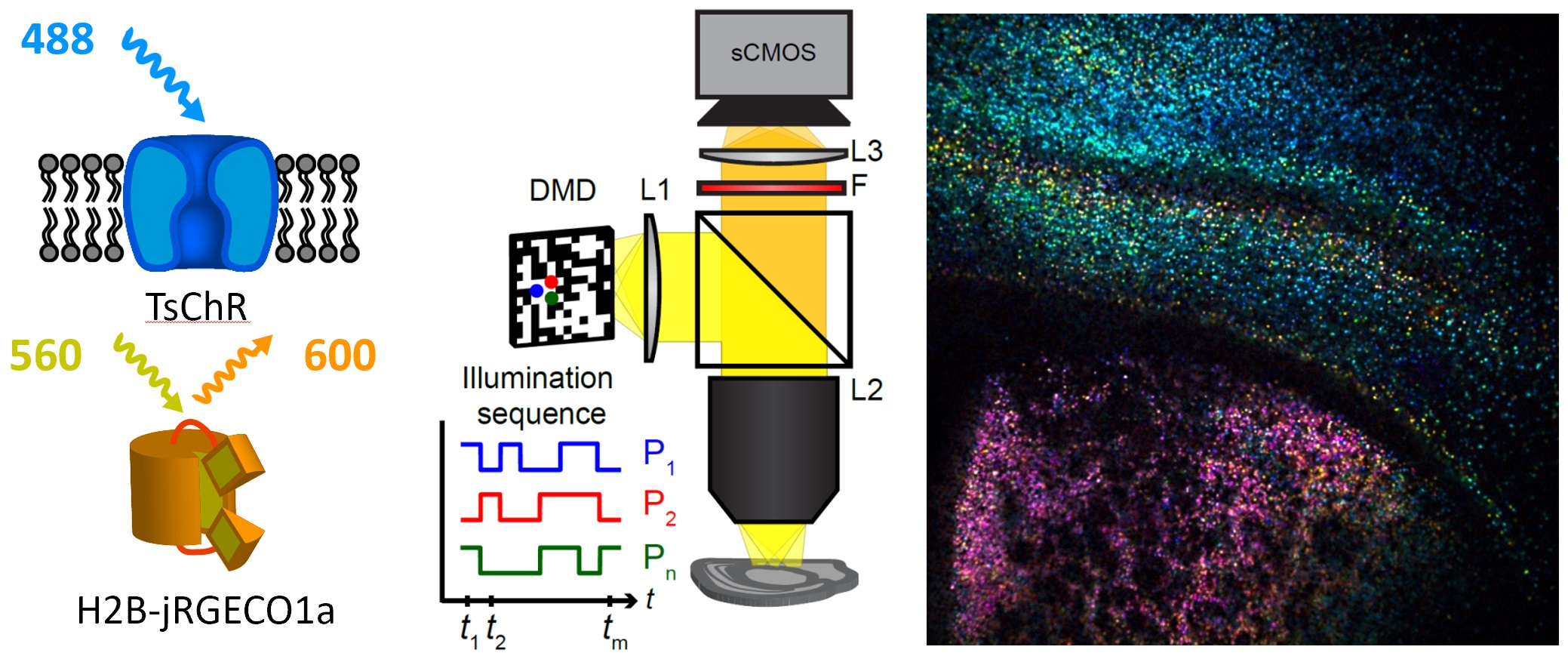 In previous work towards all-optical mapping of neuronal function, we developed experimental protocols for all-optical neurophysiology, and invented a high-speed optical sectioning method for imaging neuronal activity in brain tissue.
In previous work towards all-optical mapping of neuronal function, we developed experimental protocols for all-optical neurophysiology, and invented a high-speed optical sectioning method for imaging neuronal activity in brain tissue. 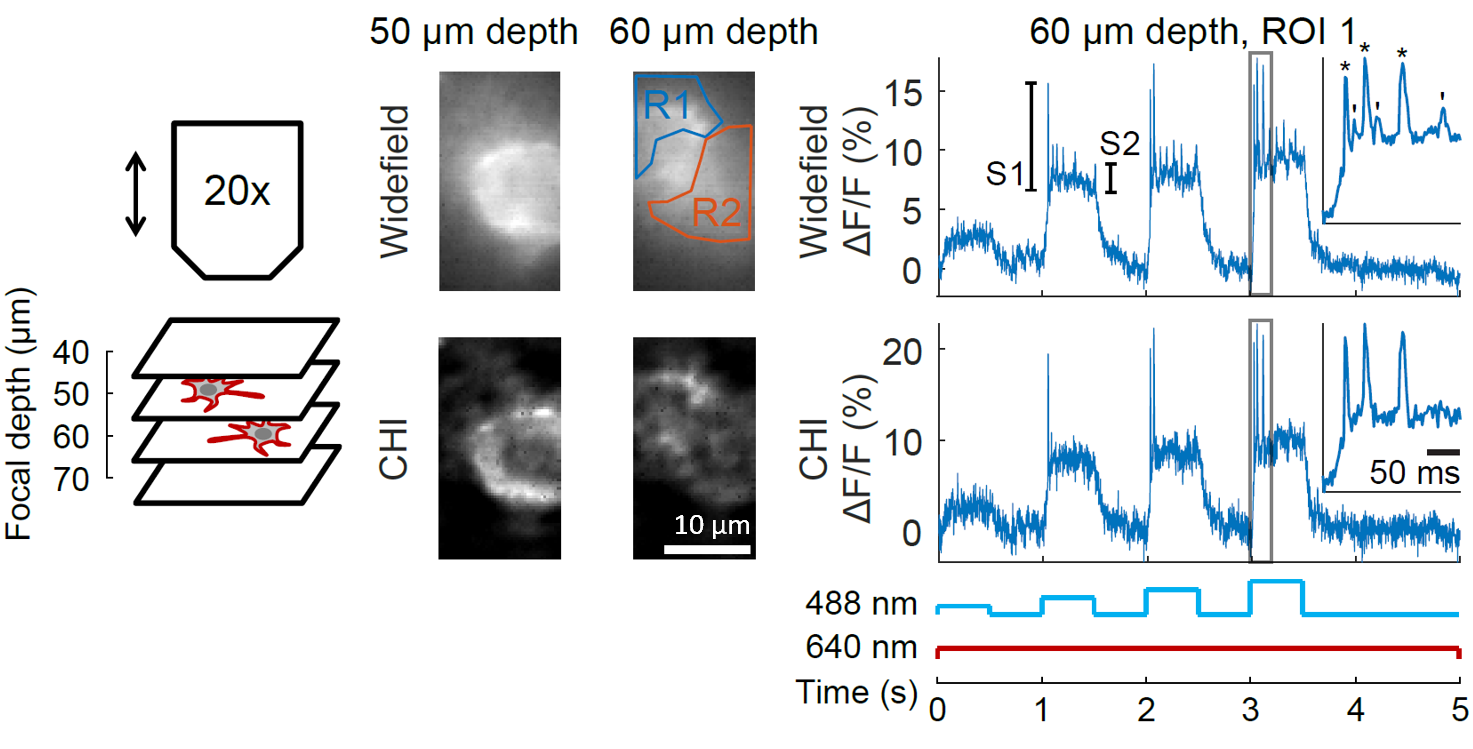 We applied these tools to make wide-area functional maps spanning cortex and striatum, of the effects of antiepileptic drugs on neural excitability and of the effects of AMPA and NMDA receptor blockers on functional connectivity in acute brain slices. To enable large-scale targeted excitation, we developed
We applied these tools to make wide-area functional maps spanning cortex and striatum, of the effects of antiepileptic drugs on neural excitability and of the effects of AMPA and NMDA receptor blockers on functional connectivity in acute brain slices. To enable large-scale targeted excitation, we developed  selective access multiphoton excitation microscopy and its application to record dynamics of synaptic release and facilitation. Further work advancing all-optical electrophysiology enabled investigation of
selective access multiphoton excitation microscopy and its application to record dynamics of synaptic release and facilitation. Further work advancing all-optical electrophysiology enabled investigation of 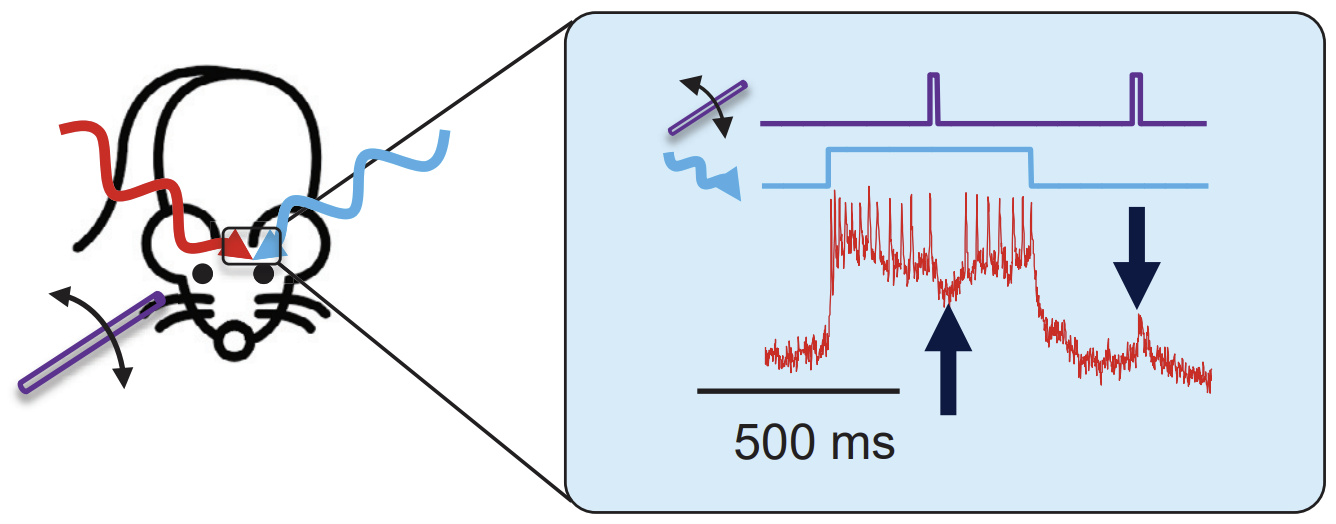 sub-threshold correlations, lateral inhibition, and interneuron dynamics in live animals.
sub-threshold correlations, lateral inhibition, and interneuron dynamics in live animals.
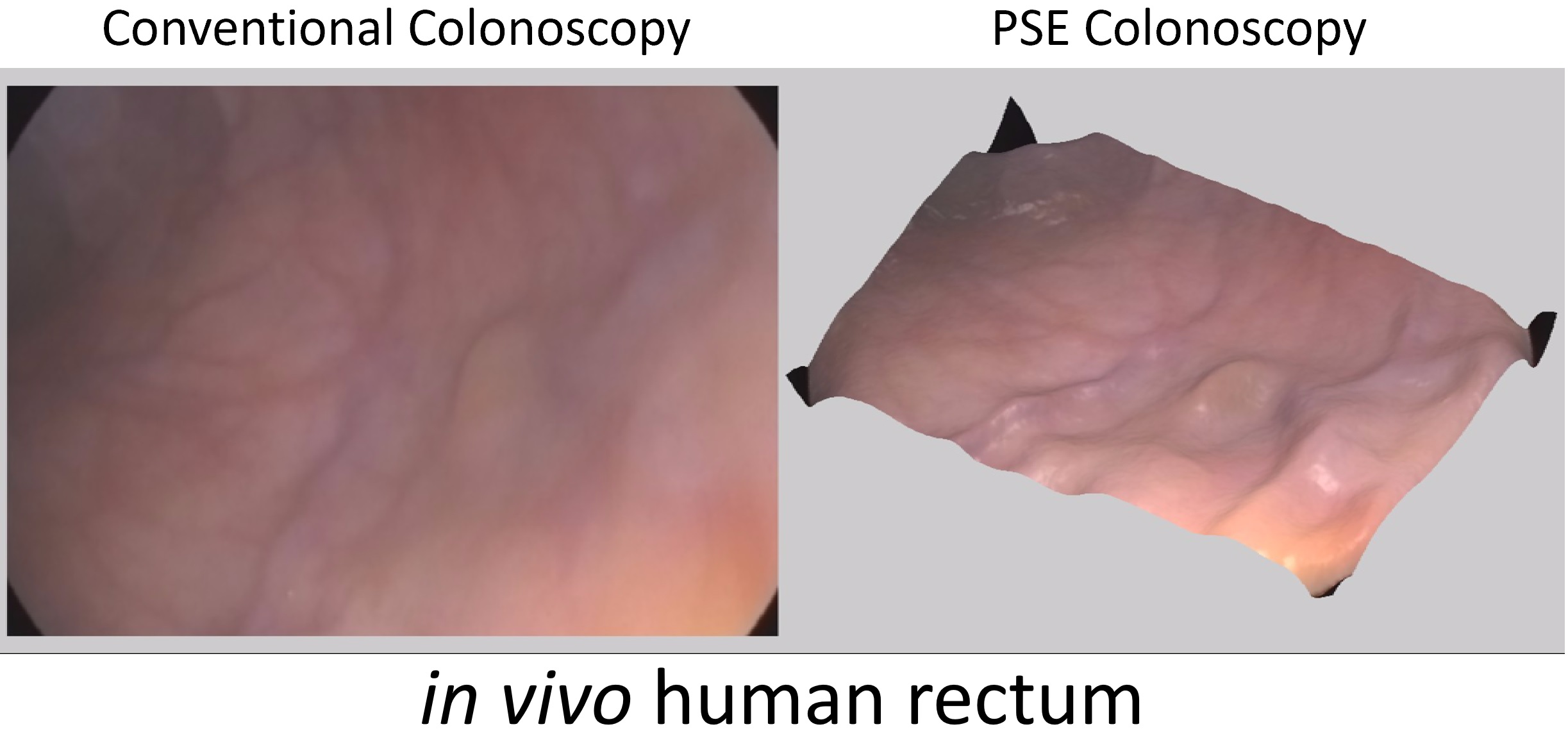 Past projects included improving colonoscopy to prevent cancer: we invented a technology that uses a standard endoscope to calculate and display 3D morphology of the colon mucosa to highlight lesions, then we built a prototype and tested it in a human clinical trial. To improve molecular characterization in oncology,
Past projects included improving colonoscopy to prevent cancer: we invented a technology that uses a standard endoscope to calculate and display 3D morphology of the colon mucosa to highlight lesions, then we built a prototype and tested it in a human clinical trial. To improve molecular characterization in oncology, 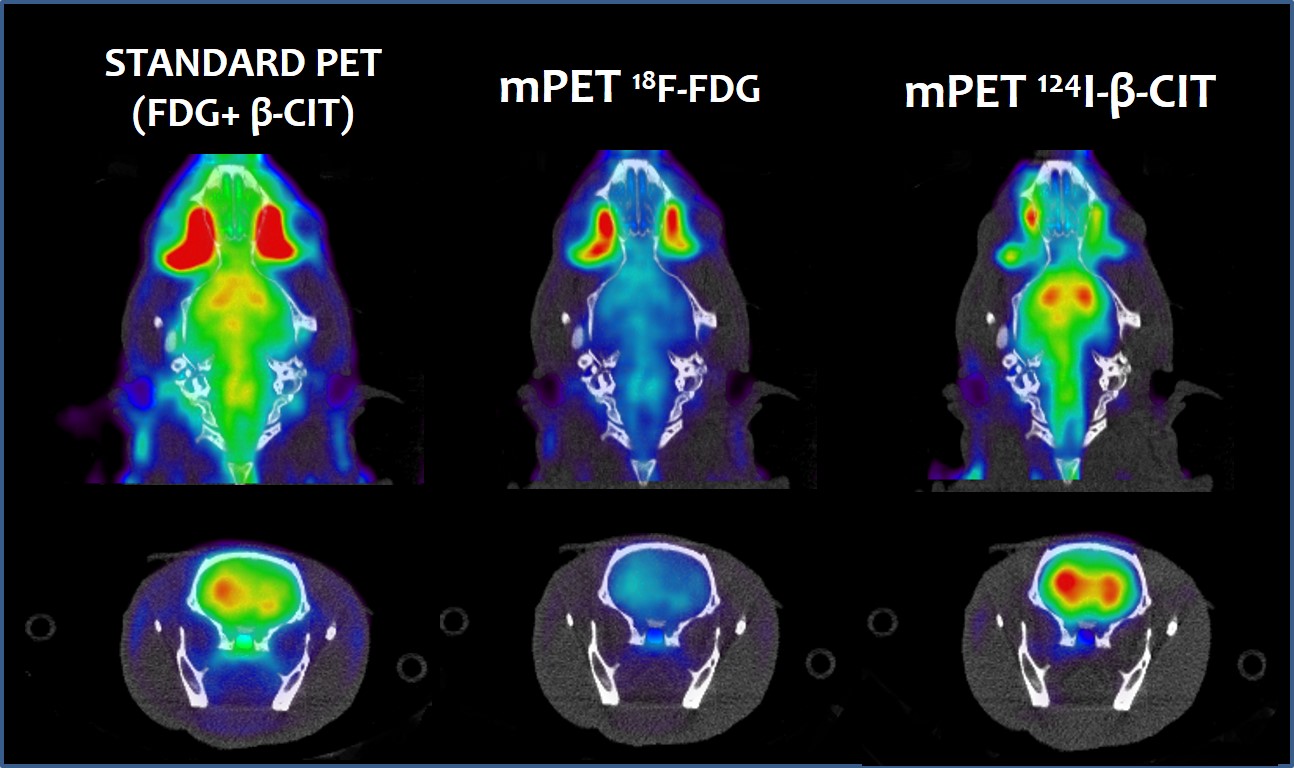 we invented a method for multiplexed PET imaging, and applied it to simultaneously measure the biodistribution of two radiotracers using preclinical scanners, while improving sensitivity of traditional PET scanners. To enable cheaper MRI scanners, we developed a theoretical framework based on the Fractional Fourier Transform to understand and reconstruct MRI signals generated in a quadratic magnetic field.
we invented a method for multiplexed PET imaging, and applied it to simultaneously measure the biodistribution of two radiotracers using preclinical scanners, while improving sensitivity of traditional PET scanners. To enable cheaper MRI scanners, we developed a theoretical framework based on the Fractional Fourier Transform to understand and reconstruct MRI signals generated in a quadratic magnetic field.
Lab Members
Initially, our group has been composed of engineers who are interested in learning biophysics, optics, numerical analysis methods and deep learning, neurobiology, various medical imaging topics, or combinations thereof. Many of us have been afraid of topics we didn’t know, until we remember that everything we know has been learnt by us before. Visit our people page to see more information on each person who works in the lab (publications, contact information, photos).
Lab Culture
Our lab welcomes all who love to learn and are thirsty for more. Everyone is encouraged to give feedback on everyone else’s results; better identify flaws with help from friends than from angry reviewers. We usually hold regular group meetings and project meetings. Progress is focused on goals and driven by self interest and motivation. We use a Google calendar to share Lab activities, and a slack channel to enjoy spam-free communications.
Collaborators
Here are some cool people in fields that interest us. note: This list is in no way complete. If you’ve collaborated with us and want a link here, let us know!
Pontifical Catholic University of Chile:
- Cristián Tejos - Dept of Electrical Engineering
- Tobias Wenzel - Institue for Biological and Medical Engineering
- Rodrigo del Rio - Dept of Biology
- Pablo Irarrázaval - Institue for Biological and Medical Engineering
- Carlos Sing-Long - Institue for Mathematical and Computational Engineering
- Andrea Ravasio - Institue for Biological and Medical Engineering
Harvard University and Massachusetts Institute of Technology:
- Martin Villiger - Wellman Center for Photomedicine, Massachusetts General Hospital
- Brett E. Bouma - Wellman Center for Photomedicine, Massachusetts General Hospital
- Adam E. Cohen - Depts of Chemistry and Chemical Biology, and of Physics, Harvard
- Samouil L. Farhi - Broad Institute of Harvard and MIT
Other:
- Nicholas J. Durr - Dept of Biomedical Engineering, Johns Hopkins University, USA
- Eduardo Lage - Dept of Electrical Engineering, Autónoma University of Madrid, Spain
- Joaquín López Herraiz - Dept of Physics, Complutense University of Madrid, Spain
This website
This website was forked from https://github.com/KordingLab/KordingLab.github.io leveraging many of its features and content. Gracias KordingLab!